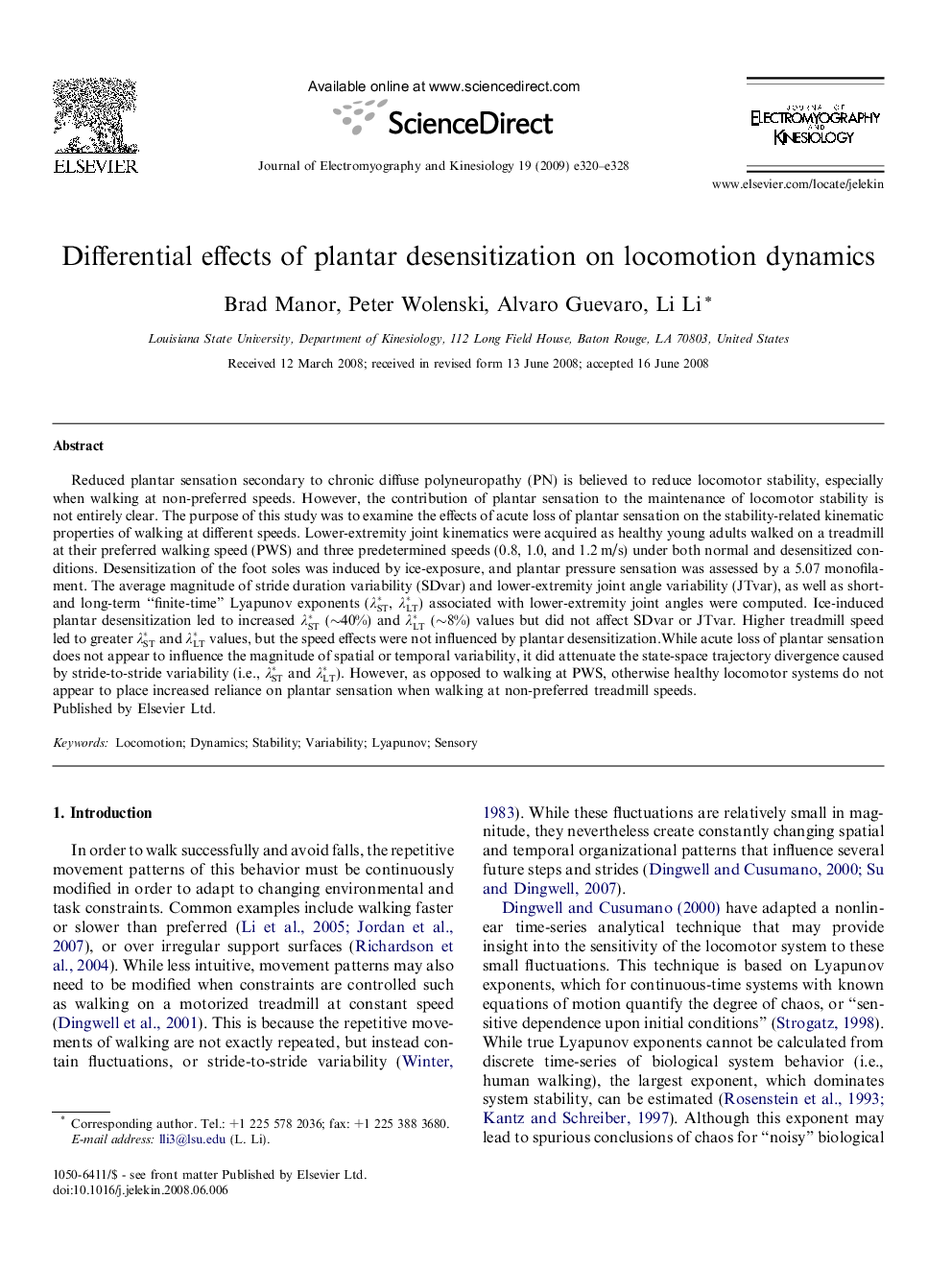| Article ID | Journal | Published Year | Pages | File Type |
|---|---|---|---|---|
| 4065245 | Journal of Electromyography and Kinesiology | 2009 | 9 Pages |
Reduced plantar sensation secondary to chronic diffuse polyneuropathy (PN) is believed to reduce locomotor stability, especially when walking at non-preferred speeds. However, the contribution of plantar sensation to the maintenance of locomotor stability is not entirely clear. The purpose of this study was to examine the effects of acute loss of plantar sensation on the stability-related kinematic properties of walking at different speeds. Lower-extremity joint kinematics were acquired as healthy young adults walked on a treadmill at their preferred walking speed (PWS) and three predetermined speeds (0.8, 1.0, and 1.2 m/s) under both normal and desensitized conditions. Desensitization of the foot soles was induced by ice-exposure, and plantar pressure sensation was assessed by a 5.07 monofilament. The average magnitude of stride duration variability (SDvar) and lower-extremity joint angle variability (JTvar), as well as short- and long-term “finite-time” Lyapunov exponents (λST∗, λLT∗) associated with lower-extremity joint angles were computed. Ice-induced plantar desensitization led to increased λST∗ (∼40%) and λLT∗ (∼8%) values but did not affect SDvar or JTvar. Higher treadmill speed led to greater λST∗ and λLT∗ values, but the speed effects were not influenced by plantar desensitization.While acute loss of plantar sensation does not appear to influence the magnitude of spatial or temporal variability, it did attenuate the state-space trajectory divergence caused by stride-to-stride variability (i.e., λST∗ and λLT∗). However, as opposed to walking at PWS, otherwise healthy locomotor systems do not appear to place increased reliance on plantar sensation when walking at non-preferred treadmill speeds.
